The Psychedelic Influence on Philosophy
MMXVI
Philosophy itself often arrives as a mind-altering experience, a new mode of perception unto our cosmos, at times so radical as to be hazardous. Thus can philosophy be seen as a psychoactive substance—yet the place of psychoactive substances in philosophy is not apparent. In this mildly chronological overview we shall shed light upon the history of the notable western philosophers who took psychedelic chemicals and how this may have influenced their thought—how psychedelics influenced philosophy.
Plato (c. 427 – 347)
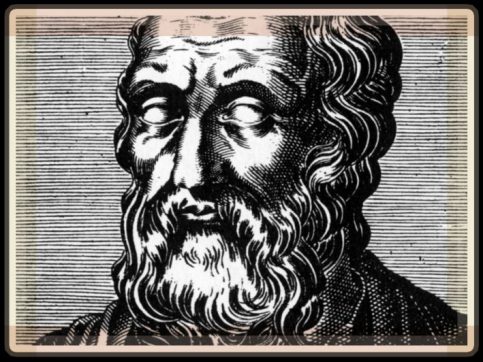
We begin with a radical conjecture: western philosophy was triggered by the intake of psychedelics: Plato’s philosophy was inspired by psychedelic intake, and western philosophy was inspired by Plato. The British philosopher Alfred North Whitehead (1861 – 1947) is known for claiming that,
The safest general characterization of the European philosophical tradition is that it consists of a series of footnotes to Plato.[1]
Plato is perhaps chiefly known for his arguments for the existence of the soul and for the subsistence of an eternal realm of Forms (‘ideas’ that exists beyond space and time). This pair of transcendent notions are encountered first in his book Phaedo, also known as On the Soul. Their introduction is preceded by these words:
There are indeed, as those concerned with the mysteries say, many who carry the thyrsus [staff/wand] but the worshipers of Dionysus [the true mystics] are few. These latter are, in my opinion, no other than those who have practiced philosophy in the right way. I have in my life left nothing undone in order to be counted among these as far as possible…[2]
We shall encounter Dionysus, the god of intoxication, later. For now we note Plato’s desire to be figured among the philosophers of the Mysteries. The Mysteries were events held regularly in Ancient Greece, the most official and known of which were the Eleusinian Mysteries which Plato attended—held at Eleusis, a dozen miles or so from Athens.
There, at the Temple of Demeter, participants would drink a potion—kykeon—containing barley, mint and water. It is widely believed that the kykeon contained too a psychedelic element. What that element was is widely contested, that it was psychedelic is less contested.
Dr Albert Hofmann, the creator of LSD, argued that the compound was derived from the barley parasite fungus ergot, from which LSD is also derived. Hofmann writes,
[We can] assume that the barley grown [in the Rarian plain] was host to an ergot containing … the soluble hallucinogenic alkaloids. The famous Rarian plain was adjacent to Eleusis. Indeed this may well have led to the choice of Eleusis for Demeter’s temple …[3]
Within the darkened temple, participants had to exclaim: “I have fasted, I have drunk the kykeon”. What happened thereafter is, as the name of the event signals, mysterious—but in the PhaedrusPlato gives this account:
[W]ith a blessed company—we following in the train of Zeus, and others in that of some other god—… saw the blessed sight and vision and were initiated into that which is rightly called the most blessed of mysteries, which we celebrated in a state of perfection … being permitted as initiates to the sight of perfect and simple and calm and happy apparitions, which we saw in the pure light, being ourselves pure and not entombed in this which we carry about with us and call the body, in which we are imprisoned like an oyster in its shell.[4]
Thus is it quite plausible that psychedelics inspired the mind-body dualism prevalent in the west, not only in philosophy but also in religion: Plato’s influence on Christianity was substantial—Nietzsche even claimed that ‘Christianity was Platonism for the “people”.’[5] Regardless of the validity or not of Plato’s arguments, his thinking informed and enlightened our culture. Through a cave darkly, Plato came to see the light; this sunbeam of philosophy, science and reason sprang from the psychedelic experience.
However, dark clouds eventually came to obstruct the sun with the rise of a militaristic Christianity. In 392AD the Eleusinian temples were closed by decree by the Christian Roman emperor Theodosius I. With this the Dark Ages commence, with the light of pagan or secular thought only to return with the Renaissance and then the Enlightenment. The philosopher Immanuel Kant (1724 – 1804) heralds the latter with his anti-Christian essay of 1784, What is Enlightenment? Although Kant wrote a book on the scientist and mystic Emanuel Swedenborg (1688 – 1772), Kant himself did not, we assume, have any kind of mystical experiences. However, a follower of his did.
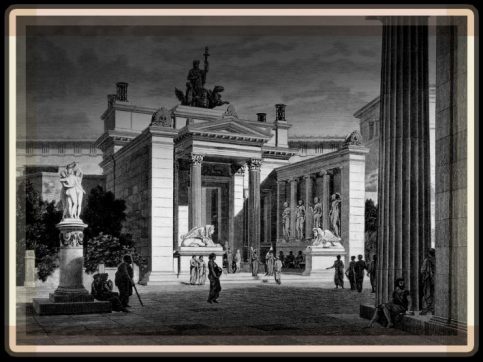
Thomas de Quincey (1785 – 1859)
Thomas de Quincey was one of the first English commentators on Kant, publishing a number of articles on Kant’s philosophy of transcendental idealism. Yet what de Quincey is known for above all else is his 1821 book Confessions of an English Opium Eater. Therein he describes the psychedelic experiences of the poppy derivative, used at first to sedate his ailments,
O just and righteous opium! … thou bildest upon the bosom of darkness, out of the fantastic imagery of the brain, cities and temples … beyond the splendours of Babylon … thou hast the keys of Paradise, O just, subtle, and mighty opium!
De Quincey stated his love for three philosophers: Plato, Kant and Schelling. Kant claimed that there existed a reality—noumena—beyond our experience, which thus remained inaccessible to us mere humans.[6] Schelling, though a Kantian, argued that perception of noumena was in fact, in a sense, possible[7]—a perception named intellectual intuition. Whether de Quincey accepted this Romantic possibility is an open question.
Could opium offer a glimpse of noumena or was this but a pipe-dream? Although opium use never made de Quincey go as far as to avow such access to all of reality, it did make him avow the possibility of access to all of one’s past. He writes,
The minutest incidents of childhood, or forgotten scenes of later years, were often revived. … I feel assured that there is no such thing as ultimate forgetting, traces once impressed upon the memory are indestructible…[8]
The indestructibility of memories later became an advanced theoretical issue for the French philosopher Henri Bergson,[9] to whose philosophy the prominent psychonaut Aldous Huxley was in debt, as we shall later see.
Humphry Davy (1778 – 1829)
A contemporary of de Quincey’s was the Penzance-born inventor and ‘chemical philosopher’[10]Humphry Davy. Davy was friend to the poet Samuel Taylor Coleridge, also an apostle of the Kantian Schelling and his transcendental idealism. Such Idealism—idea-ism: that ‘matter’ in actually is only a projection of the mind—seems to have also come to Davy through high-dose intake of nitrous oxide: ‘laughing gas’. In Davy’s book on his experiments with the psychoactive substance, he writes,
I lost all connection with external things; trains of vivid visible images passed through my mind and were connected with words in such a manner as to produce perceptions perfectly novel. I existed in a world of newly connected and newly modified ideas … I exclaimed to Dr Kinglake, “Nothing exists but thoughts!” …
I have often felt very great pleasure when breathing it alone, in darkness and silence, occupied only by ideal existence.[11]
Though Davy is perhaps viewed as a man preoccupied with concerns of practical utility—he is famed for his invention of the miners’ safety lamp, known in fact as the Davy Lamp—the apparently non-materialist, idealist experiences bequeathed to him by nitrous oxide seem to have informed his general worldview. In Davy’s final book, Consolations in Travel or The Last Days of a Philosopher, he writes, against the prevailing materialism of his age and profession, that,
Without the eye there can be no sensations of vision, and without the brain there could be no recollected visible ideas; but neither the optic nerve nor the brain can be considered as the percipient principle—they are but the instruments of a power which has nothing in common with them. …
The desire of glory, of honour, of immortal fame, and of constant knowledge, so usual in young persons of well-constituted minds, cannot, I think, be other than symptoms of the infinite and progressive nature of intellect.[12]
Arthur Schopenhauer (1788 – 1860)
Another prominent follower of Kant was the German atheist idealist Arthur Schopenhauer. That title alone shows that an atheist need not be a materialist, despite the common association. Though Schcopenhauer is not known to have consumed nitrous oxide for intellectual pleasure and insight, he did promote the use of other intoxicants for such creative purposes:
By wine or opium we can intensify and considerably heighten our mental powers, but as soon as the right measure of stimulus is exceeded, the effect will be exactly the opposite.[13]
Whether or not psychedelic substances offer insights from within the experience, at the very least they can offer fuel for intellect and creativity, as Schopenhauer suggests. Schopenhauer did consider the mystical consciousness to begin where the rational philosophical consciousness ends—he saw the former as complementary to knowledge rather than as an obstruction. Furthermore his theory of aesthetics and his reimagining of Plato’s theory of Forms could certainly be used to interpret the psychedelic experience. It is a pity that such a great thinker and writer did not pen more on the effects of his drugs. Perhaps this is due to his not taking significant amounts of such chemicals. The figure one could call his successor, however, certainly did take significant amounts of drugs: the antichrist philosopher, Friedrich Nietzsche.
Friedrich Nietzsche (1844 – 1900)
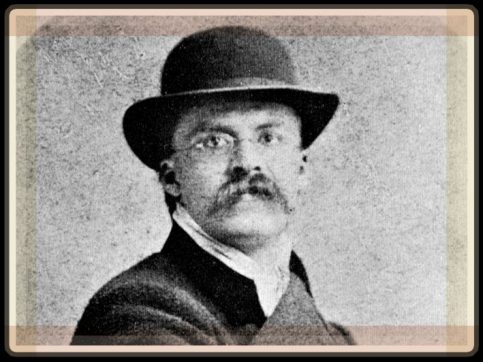
Nietzsche was a professor of philology at the University of Basel from the relatively young age of twenty-four. Under a Schopenhauerian framework, Nietzsche began his philosophical career by writing, in The Dionysian Worldview,
There are two states in which man arrives at the rapturous feeling of existence, namely in dreaming and in intoxication.
He ends his philosophical career by speaking of his ‘inspiration’ in terms of hearing thunderous deific voices and stating that he is a ‘disciple of the philosopher Dionysus’[14]—the forest god of intoxication. Between these two statements Nietzsche had ingested a variety of drugs, drugs that may have influenced his culture-shattering philosophy that decried the death of God: ‘I am not a man, I am dynamite.’[15]
Due to chronic migraines, nausea and convulsions, Nietzsche frequently took opium. This alone affected his thinking, as can be understood from his letter to close friends:
My dears, Lou and Rée: … Consider me, the two of you, as a semilunatic with a sore head who has been totally bewildered by long solitude. To this, I think, sensible insight into the state of things I have come after taking a huge dose of opium—in desperation. But instead of losing my reason as a result, I seem at last to have come to reason. …[16]
Nietzsche even devotes two poems in his book The Joyous Science to poppy-derived opium. Nietzsche also became a heavy user of chloral, ostensibly a sedative. His infamous sister, Elisabeth Förster-Nietzsche, who cared for him regularly, writes:
In the winter of 1882–3, owing to that terrible influenza, he had for the first time used chloral regularly, in large doses.[17]
Chloral was taken too in large doses by the late neurologist Oliver Sacks. In his bookHallucinations, he describes an experience derived after its intake:
I went across the road, as I often did, for a cup of coffee and a sandwich. As I was stirring the coffee it suddenly turned green, then purple. I looked up, startled, and saw a huge proboscidean head, like an elephant seal. Panic seized me; I slammed a five-dollar note on the table and ran across the road to a bus on the other side. But all the passengers on the bus seemed to have smooth white heads like giant eggs, with huge glittering eyes like the faceted compound eyes of insects—their eyes seemed to move in sudden jerks, which increased the feeling of their fearfulness and alienness.[18]
Incidentally, with regard to the theme of this article, Oliver Sacks also had a relevant experience on Artane (trihexyphenidyl):
[A] spider called out “Hello!” … I said, “Hello yourself,” and with this we started a conversation, mostly on rather technical matters of analytic philosophy. Perhaps this direction was suggested by the spider’s opening comment: did I think that Bertrand Russell had exploded Frege’s paradox?[19]
Bertrand Russell once wrote against Nietzsche that ‘I think the ultimate argument against his philosophy, as against any unpleasant but internally self-consistent ethic, lies not in appeal to facts, but in an appeal to the emotions.’[20]
Nietzsche’s ethic, or lack thereof, is perhaps encapsulated in the title of his later masterpiece,Beyond Good and Evil. In place of the Christian God and His morality, Nietzsche put his ideal of a coming Dionysian age of the Übermensch, the Superman. What the Übermensch actually is is an issue of much debate. A. R. Orage who authored the first systematic introduction to Nietzsche in English, writes that,
new modes of consciousness will be needed, as the mystics have always declared … the differencing element of man and Superman will be the possession of these.[21]
And new modes of consciousness did Nietzsche certainly experience. During the August of 1884 when Nietzsche was combining chloral hydrate with potassium bromide, his friend Resa von Schirnhofer planned to visit him in Sils-Maria, Switzerland. After an absence of one and a half days, von Schirnhofer ventures to his house and is led into the dining room – then:
As I stood waiting by the table, the door to the adjacent room on the right opened, and Nietzsche appeared. With a distraught expression on his pale face, he leaned wearily against the post of the half-opened door and immediately began to speak about the unbearableness of his ailment. He described to me how, when he closed his eyes, he saw an abundance of fantastic flowers, winding and intertwining, constantly growing and changing forms and colours in exotic luxuriance, sprouting one out of the other. “I never get any rest,” he complained…[22]
This is the closest we get to a classic trip report from Nietzsche. Von Schirnhofer also tells us that Nietzsche, as a doctor, was able to obtain any drug he fancied from pharmacists. He was always surprised, von Schirnhofer relates, that they never asked whether he was a medical doctor. A doctor of philology would not have access to the cornucopia into which he immersed himself. Nietzsche’s sister and mother claimed that it was this excessive use of drugs, including a later ‘Javanese narcotic’, which caused his fall into madness and the eventual death that occurred ten years thereafter.
In my book Noumenautics, I argue that the rare form of ‘inspiration’ Nietzsche speaks of in his autobiography is best understood as what would today be labeled auditory hallucination, in this case initiated by chemical means. Nietzsche came to hear Dionysus, as Socrates heard his daemon, and eventually he became Dionysus, signing off letters by the god’s name. Nietzsche’s drugs may have made him into the god that returned to supersede Christ.
William James (1842 – 1910)
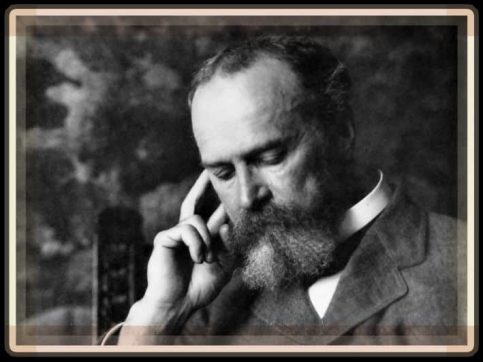
Nietzsche was rarely open about his drug use in contradistinction to his American contemporary, the philosopher William James—a deep and often detailed thinker explicit about the potential of psychedelic consciousness for the philosophy of mind and metaphysics. In his book The Varieties of Religious Experience, he writes:
Nitrous oxide and ether, especially nitrous oxide … stimulate the mystical consciousness in an extraordinary degree. … [In] the nitrous oxide trance we have a genuine metaphysical revelation. … [Our] normal waking consciousness, rational consciousness as we call it, is but one special type of consciousness, whilst all about it, parted from it by the filmiest of screens, there lie potential forms of consciousness entirely different.[23]
It seems that such chemically-induced insights, catalyzed by the writings of little-known nitrous philosopher Benjamin Paul Blood (1832 – 1919),[24] may have led him to an acceptance of the other forms of consciousness related to the panpsychism and pantheism of Gustav Fechner (1801 – 1887). This metaphysical position James pushed, with the aid of Hegel and Bergson, in his later book, A Pluralistic Universe (1909). For instance, James writes,
The drift of all evidence we have seems to me to sweep us very strongly towards the belief in some form of superhuman life with which we may, unknown to ourselves, be co-conscious. … The analogies with ordinary psychology and the facts of pathology, with those of psychical research, so called, and with those of religious experience, establish, when taken together, a decidedly formidable probability in favor of a general view of the world almost identical with Fechner’s.[25]
Psychedelics did not only help inspire a metaphysical cosmology for James, they also allowed him to claim comprehension of the cosmology of the German dialectical idealist, Hegel (1770 – 1831):
Nitrous oxide gas-intoxication … made me understand better than ever before both the strength and the weakness of Hegel’s philosophy. I strongly urge others to repeat the experiment … its first result was to make peal through me with unutterable power the conviction that Hegelism was true after all.[26]
Henri Bergson (1859 – 1941)
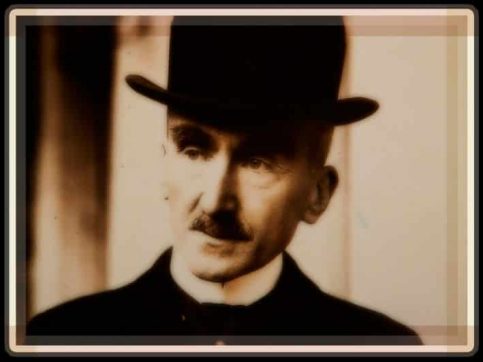
On 31st March 1910 Henri Bergson wrote the following to William James:
…I believed myself to be to be present before a superb spectacle—generally the sight of a landscape of intense colours, through which I was travelling at high speed and which gave me such a profound impression of reality that I could not believe, during the first moments of waking up, that it was a simple dream. … How I would like you to pursue this study of ‘the noetic value of abnormal mental states’! Your article [A Suggestion about Mysticism], combined with what you have said in The Varieties of Religious Experience, opens up great perspectives for us in this direction.[27]
Though Bergson himself did not pursue what he thought to be this most valuable path available to philosophy, Bergson is woven into the fabric of psychedelic philosophy due to the fact that his metaphysics was explicitly employed by Aldous Huxley (1894 – 1963), via British philosopher C. D. Broad (1887 – 1971), in what is probably the most famous book on the psychedelic experience, The Doors of Perception:
Reflecting on my experience, I find myself agreeing with the eminent Cambridge philosopher, Dr C. D. Broad, “that we should do well to consider … the type of theory which Bergson put forward … The suggestion is that the function of the brain and nervous system and sense organs is in the main eliminative and not productive.”[28]
This Bergsonian so-called ‘reducing-valve’ theory has been very influential in psychedelic circles as a psychophysical account of the psychedelic state. It is the view that the brain, contrary to popular opinion, does not produce consciousness but filters it according to practical purposes. I have elsewhere offered a detailed explanation of how Bergson’s theory can be used to explain the varieties of psychedelic experience.[29]
His theory was most recently referred to in connection with the recent brain-imaging studies carried out upon subjects on LSD at Imperial College. This ground-breaking research was sponsored by The Beckley Foundation, headed by Amanda Feilding. The findings were launched atThe Royal Society in April 2016, where Countess Feilding reflected that,
Our studies have begun to lay bare the workings underlying the changing states of consciousness. With a better understanding of the mechanisms underlying these states we can learn to use them better, to manipulate our consciousness, to our own and societies’ advantage. William James explains it like seeing through the veils of perception. Huxley describes the ego as a reducing valve of the brain. How right they were. Now, for the first time we have seen the empirical basis of these realisations.[30]
A leading neuroscientist of this research, Professor David Nutt, made the same point for earlier research on psilocybin, a psychoactive chemical within magic mushrooms, in these terms:
Psychedelics are thought of as ‘mind-expanding’ drugs so it has commonly been assumed that they work by increasing brain activity, but surprisingly, we found that psilocybin actually caused activity to decrease in areas that have the densest connections with other areas. These hubs constrain our experience of the world and keep it orderly. We now know that deactivating these regions leads to a state in which the world is experienced as strange.[31]
Though this research looks promising for Bergsonians, we should urge caution due to the fact that the neuroimaging research is young and scarce, and our notions of how mind and matter, so named, are related remains a burning question to which no-one has provided a satisfactory answer. Such an answer though, philosophers of mind should note, may require such research—Professor Nutt claimed too that,
If you want to understand consciousness, you’ve got to study psychedelics.[32]
Walter Benjamin (1892 – 1940)
Walter Benjamin was enticed into experimentation with hashish and other psychoactive chemicals through his reading of the poet Baudelaire’s Artificial Paradises of 1860, a book itself inspired by the work of Thomas de Quincey. Benjamin’s book On Hashish is a posthumous collection of his writings not only on hashish, but also on opium, eucadol and mescaline.
These psychoactive experiments were pursued with his friend, the neo-Marxist philosopher Ernst Bloch (1885 – 1977), who in his chief work The Principle of Hope commends the drug’s ability to enhance imagination, so vital for human progress.
Benjamin’s writings on the psychedelic experience are not systematic, though they contain many sublime fragments:
You become so sensitive: fearing a shadow would damage the paper on which it is falling …
The claims of space and time of the hashish eater now come to bear; and they are regal … eternity does not last too long.[33]
Sebastian Marincolo argues that apart from the intrinsic value such experiences had for Benjamin, they also had instrumental value in informing the work that made Benjamin noteworthy, especially with regard to Benjamin’s notions of functional displacement and more specifically aura: the spatiotemporal, cultural environment of an object which bestows upon that object a function. One of Benjamin’s trip reports reads:
[T]here is functional displacement. … [S]omeone gave me one of Kafka’s books: “Betrachtung.” I read the title. But then the book at once changed into the book-in-the-writer’s-hand, which it becomes for the (perhaps somewhat academic) sculptor who confronts the task of sculpting that particular writer. It immediately became integrated into the sculptural form of my own body …[34]
Marincolo goes on to relate how this noted change of function (from an object to read to a part-role of a body shape) influenced Benjamin’s magnum opus, The Work of Art in the Age of Mechanical Reproduction:
One of the core ideas of Benjamin’s ground breaking essay is to observe that modern means of technical reproduction strip pieces of art of their aura. A photograph of an object can be reproduced and seen anywhere in the world, taking the object out of its spatio-temporal and historical-cultural context.[35]
Benjamin’s own historical-cultural context was ill-fated to him, being German Jewish under the Third Reich. Though Nietzsche railed at anti-Semitism, his sister Elisabeth Förster-Nietzsche encouraged it, marrying a leading anti-Semite and befriending Hitler. Such prejudice seems to have ired Benjamin to such an extent so as to have bled into one of Benjamin’s mescaline experiences of 1934:
From the cracks of the Förster House grow tufts of hair. The Förster House: (she [Elisabeth Förster-Nietzsche] has turned the Nietzsche Archive into a Förster House [forester’s lodge]) the Förster house is of red stone. I am a spindle in its banister: an obdurate, hardened post. But that is no longer the totem pole—only a wretched copy. Chamois’ foot or horse’s hoof of the devil: a vagina symbol.[36]
Whilst attempting to flee from the National Socialist regime in 1940, Walter Benjamin died, quite possibly from suicide by morphine overdose. Meanwhile in France another philosopher, for whom Benjamin had only wrath, was lounging and socializing in Paris as an intellectual German army captain: Ernst Jünger.
Ernst Jünger (1895 – 1998)
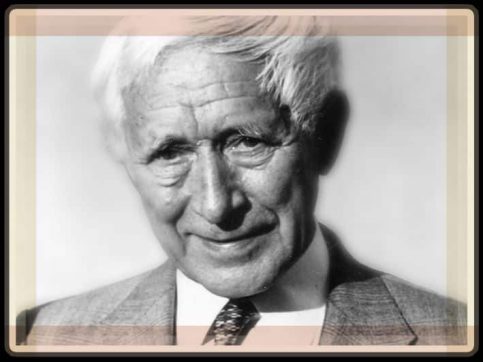
Jünger emerged into the public eye when he published the recollections of his service as a soldier in the First World War,[37] recollections often considered as glorifications of violence. He was highly decorated for his bravery and aptitude, and later served in the Second World War, as mentioned. However, Jünger twice refused a seat on the Nazi Reichstag, and he was loosely associated with Stauffenberg bomb plot to assassinate Hitler—an autocrat whom Jünger perhaps considered a little too left wing.
The philosopher Heidegger, who did join the National Socialist movement, called Jünger ‘the true continuer of Nietzsche’.[38]—certainly he continued the drug use Nietzsche had pursued. In 1970 Jünger published Annäherungen: Drogen und Rausch (Approaches: Drugs and Intoxication) wherein he coined the term psychonaut: the psychedelic astronaut, explorer of the inner cosmos. This work has still not been published in English, though a Swedish translation exists.[39]
Albert Hofmann was a friend of Jünger and devoted an entire chapter in his book LSD: My Problem Child to the man. As with Heidegger, Jünger was in correspondence with Hofmann. One of the letters to the chemist speaks of an aspect of value of the psychedelic experience:
What interested me above all was the relationship of these [ psychedelic ] substances to productivity. It has been my experience, however, that creative achievement requires an alert consciousness, and that it diminishes under the spell of drugs. On the other hand, conceptualization is important, and one gains insights under the influence of drugs that indeed are not possible otherwise.[40]
In another letter to Hofmann over a decade later Jünger writes:
These things should only be tried in small circles. I cannot agree with the thoughts of Huxley that possibilities for transcendence could here be given to the masses. Indeed, this does not involve comforting fictions, but rather realities, if we take the matter earnestly.[41]
Hofmann and Jünger took LSD and psilocybin together on a number of occasions. It seems that the experience had a more profound veridical aspect for Jünger, touching upon matters spiritual, metaphysical, eschatological. Hofmann relates such an occasion:
The next and last thrust into the inner universe together with Ernst Jünger, this time again using LSD, led us very far from everyday consciousness. We came close to the ultimate door. Of course this door, according to Ernst Jünger, will in fact only open for us in the great transition from life into the hereafter.[42]
Octavio Paz (1914 – 1998)
It is interesting to note that the psychedelic experience does not of necessity lead to a left wing, liberal, or New Age worldview. Jünger is falsification of such a theory. Another follower of Nietzsche and fellow psychonaut, Nobel laureate Octavio Paz, also distanced himself from such a worldview; his psychedelic use fostered a more nihilistic cosmology:
The Western attitude is unwholesome. It is moral. Morality, the great isolator, the great separator, divides man in half. To return to the unity of the vision is to reconcile body, soul, and the world. … [ Psychedelic] [d]rugs are nihilistic: they undermine all values and radically overturn all our ideas about good and evil, what is just and what is unjust, what is permitted and what is forbidden.[43]
Herbert Marcuse (1898 – 1979)
This view that psychedelic experience can overturn our values is shared by Frankfurt School theorist, Herbert Marcuse. However, returning to the Left, Marcuse argues, in An Essay on Liberation (1969), that such an overturn is important not because it leads to a rejection of morality but because it leads to a rejection of capitalism:
[An] established society imposes upon all its members the same medium of perception … .
The “trip” involves the dissolution of the ego shaped by the established society—an artificial and short-lived dissolution. But the artificial and “private” liberation anticipates, in a distorted manner, an exigency of the social liberation: the revolution must be at the same time a revolution in perception which will accompany the material and intellectual reconstruction of society, creating the new aesthetic environment.
Awareness of the need for such a revolution in perception, for a new sensorium, is perhaps the kernel of truth in the psychedelic search.[44]
Marcuse goes on to argue that such a reset of perception via psychedelics is vitiated if its deliverance of ‘artificial paradises’ quells the impulse and rationality required to bring about the revolution against the capitalist framework.
Jean-Paul Sartre (1905 – 1980)
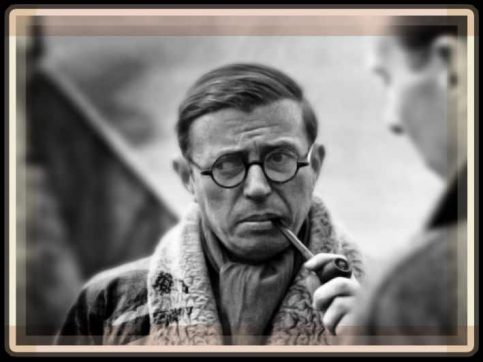
The existentialist Frenchman Jean-Paul Sartre was inspired to pursue philosophy due to his reading Bergson.[45] Sartre decided to take an injection of mescaline in 1935 to better understand consciousness, and in hope of generally gaining inspiration. The experience informed his essayImagination: A Psychological Critique (1936) and led to the novel that made him famous, Nausea(1938), which features psychedelic imagery. However, for Sartre, the mescaline experience had its price, a price of terror:
Since I had been experimenting with Lagache, who’s rather saturnine and who said to me, “What it does to you is terrible!”, I ended up having all sorts of unpleasant images. My first contact with mescaline took place in a partially-lighted room in which all objects changed shape according to real perspective. … [T]here was an umbrella hanging on a coat rack, and I had the impression it was a vulture. The cloth part of the umbrella became the wings, and then there was a neck and a kind of beak. It was seen like that. … And when I left I had strange visions, too. I saw a man as a toad running in the street. And finally, when I got back to Rouen, I saw Beaver’s shoe as a big fat fly. … I immediately foresaw that all this was leading me—why I can’t imagine—to chronic hallucinatory psychosis.[46]
This paranoia followed Sartre for weeks after his mescaline experience, as related by the Swedish psychonaut Patrick Lundborg (1967 – 2014):
For several weeks [after taking mescaline] he had lived with the idea that he was being pursued by giant lobsters. In less fear-stricken moments Sartre understood that the oversized lobsters were not real, but this insight brought him no comfort, since it seemed to suggest that he was going insane.[47]
Michel Foucault (1926 – 1984)
Another French free thinker, who applied himself to Nietzsche’s views on power, was Michel Foucault. He took inspiration from psychedelics, but seldom wrote about them. One exception is Foucault’s essay of 1970, Theatrum Philosophicum, which mentions LSD and opium in relation to Deleuze’s book The Logic of Sense. Foucault writes:
We can easily see how LSD inverts the relationships of ill humor, stupidity, and thought: it no sooner eliminates the supremacy of categories than it tears away the ground of its indifference and disintegrates the gloomy dumbshow of stupidity; and it presents this univocal and acategorical mass not only as variegated, mobile, asymmetrical, decentered, spiraloid, and reverberating but causes it to rise, at each instant, as a swarming of phantasm-events.
Two years before he died of AIDS, Foucault expressed interest in writing,
a study of the culture of drugs or drugs as culture in the West … it’s so closely tied to the artistic life of the West.[48]
Unfortunately this study never took place. Concurrently his fellows Gilles Deleuze (1925 – 1995) and Félix Guattari (1930 – 1992), though engaging with talk of psychedelics, frequently with reference to the mescaline use of poet Henri Michaux (1899 – 1984),[49] speak somewhat disparagingly of the value of the drugs, for instance in their book A Thousand Plateus. Such pessimism was in sharp contrast to the optimistic mescaline project envisioned by the psychiatrist who coined the term psychedelic: Humphrey Osmond (1917 – 2004).
Outsight
Outsight was the greatest thing that never happened in psychedelia. The project was planned in the 1950s by Humphrey Osmond, neurophilosopher John Smythies, and author Aldous Huxley. The objective was to collect, as Osmond briefed, ‘personal reflections on the experience of taking mescaline by 50 to 100 notable subjects in philosophy, literature and science.’[50] These leading intellectuals included C. D. Broad, A. J. Ayer, H. H. Price, J. C. Ducasse, Gilbert Ryle, Carl Jung, Albert Einstein, and novelist Graham Greene. A lot of interest was shown by these figures but, alas, the funding for Outsight was never awarded—a rejection the organizers blamed partly on the stuffy reductivism of the time.
It was certainly unfortunate that the first wave of psychedelia occurred concomitantly with the point where the philosophy of mind was at its most reductive. That is, at the point in the West where the intelligentsia favoured, spurned on by arguments in linguistic philosophy and in psychology, a view which reduced the mind to mere verbal confusion, function, physical behaviour or physical identity. Were an Outsight re-proposed today, with our less-reductive and multifarious theories as to the mind-matter relation—the ‘world-knot’ as Schopenhauer called it—funding may be more forthcoming.
Eschaton
Psychedelic experience has then influenced different philosophers in different ways. Its multifaceted, anomalous, alien, awe-inspiring, and at times terrifying nature is not easily analysed. In fact, it often transgresses the phenomenological criteria by which analysis can take place. But then such novel phenomena can be taken as an augmentation of the phenomenological toolkit rather than as a mere mysterious anomaly to treat with philosophic disregard. As A. N. Whitehead urged:
[The] essence of great experience is penetration into the unknown, the unexperienced … . If you like to phrase it so, philosophy is mystical. For mysticism is direct insight into depths as yet unspoken. But the purpose of philosophy is to rationalize mysticism: not by explaining it away, but by the introduction of novel verbal characterizations, rationally coördinated.[51]
Peter Sjöstedt
©Sjöstedt-H MMXVI — www.philosopher.eu
Philosopher Peter Sjöstedt-H’s Noumenautics traverses the mindscape of metaphysics, nihilism and psychedelic phenomenology. It navigates through subjects such as the sentience of cells, the constrictions of consciousness, the metaphysics of might, the magic of mushrooms, the narcotics of Nietzsche, and the neologism of neo-nihilism – the last of which may itself cause flashbacks.Tracing the fall of western morality through Kant, Schopenhauer and Nietzsche, the book descends deeper still into a metaphysics further upheld by Henri Bergson and Alfred North Whitehead. This collection of essays and notes provides a most idea-provoking, educational, and original piece of literature for the thoughtful lay-reader and specialist alike.

You must be logged in to post a comment Login